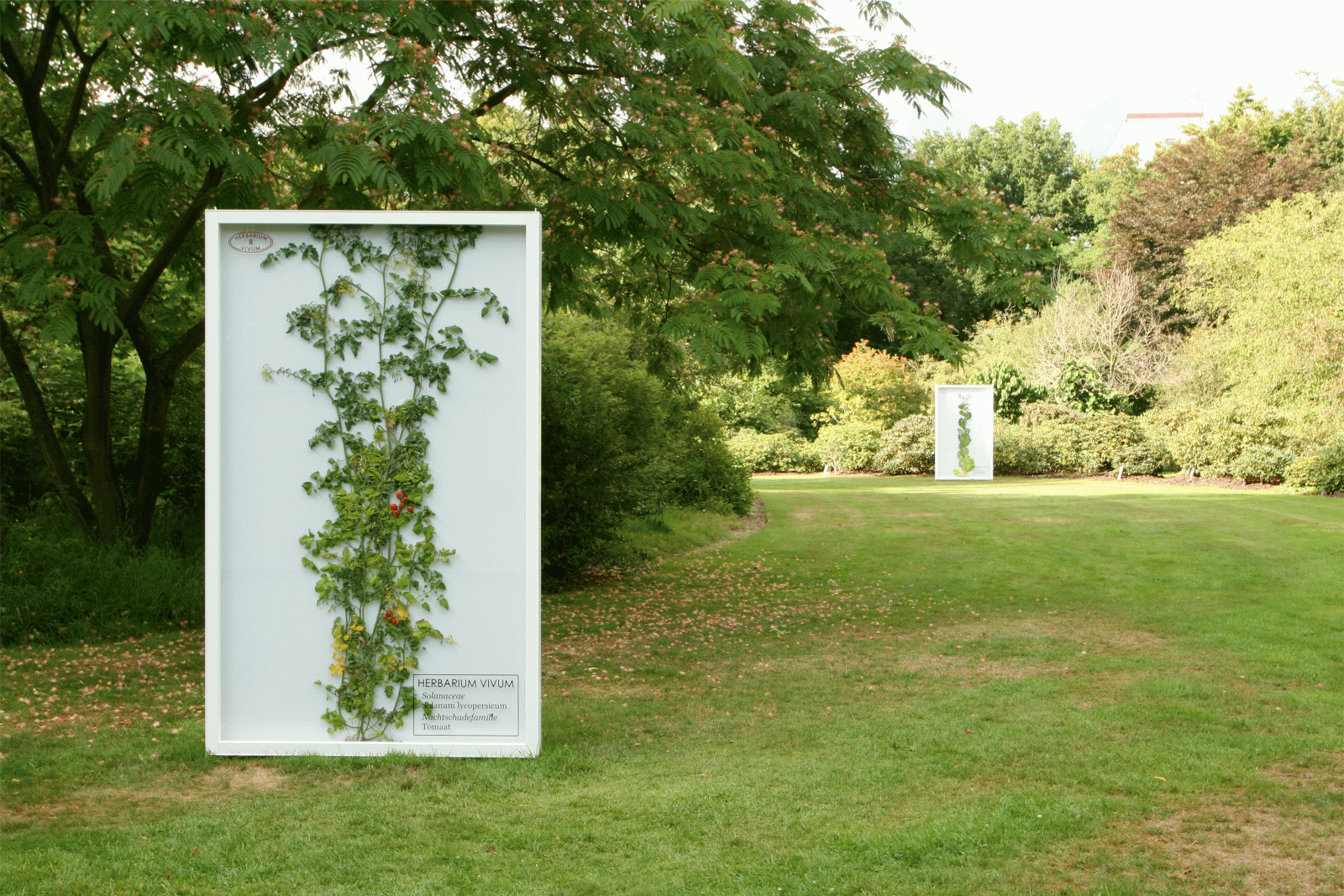Forschung
Plants in a Box. The Herbarium as Object of Knowledge and Art
Judith Elisabeth Weiss

Driessens & Verstappen, Herbarium vivum, 2013. Erwin Driessens and Maria Verstappen take the term “herbarium vivum” from the early modern period literally. Like biologists, they investigate the adaptability of plants under extreme conditions, as is the case when developing new plant varieties. How far can one go here? Driessens and Verstappen created frames for plants to grow in, resulting in near two-dimensional structures. Thus, the manipulated plants in the living herbarium begin to resemble their two-dimensional representations in herbaria and botanical illustrations. © Driessens & Verstappen
The project focuses on the herbarium as an object of knowledge and art – a theme that has received little attention in the field of cultural studies to date. This is surprising, since the herbarium is not only a scientific instrument for botany, but also an epistemic thing and, as such, should be read in its cultural context. The term “herbarium” refers to a collection of dried and pressed plants, often accompanied by textual records detailing their specs (botanical name, systematic classification, place of discovery, and date of collection); flowers and seeds are frequently added to the ensembles, too. Herbarium specimens are kept as loose-leaf collections or bound, and prepared plants are also collected in herbarium boxes. Scientific herbaria were (and still are) typically employed for the preliminary description and classification of plants, and for determining their place in the taxonomic system. In the first part of the research, reflections on the theory and history of the herbarium will be mainly concerned with the materiality and the spatio-temporal dimensions of the object. During the 19th century, when plants began being used as a model for the reformation of the arts and crafts, botany and aesthetics began to intertwine. Examples will be taken from the Karl Blossfeldt Collection at the Berlin University of the Arts, which contains a handsome number of herbaria in addition to the well-known photographs of plants. While here the native flora was used as inspiration for the production of art, the herbarium as a scientific instrument of botany gained its importance as a showcase of the world's vegetation. Besides enabling the survey of local topographies, herbaria have the potential to make the whole world come into view. This explains why the herbarium has also come under criticism as an instrument of Western science’s quest for a uniform representation of knowledge for the purpose of global communication. The research will also highlight how the display of botanical specimens can serve as a metaphor and figure of thought, as demonstrated by the popularity of plant-based nature in contemporary art – where the herbarium is experiencing a true renaissance. In this respect, considerations will be made regarding the role of plants as witnesses and agents operating at the intersection of nature and culture, knowledge and art.
This project is part of the Research and Fellowship Program 4A Laboratory: Art Histories, Archaeologies, Anthropologies, Aesthetics, a cooperation between the Kunsthistorisches Institut in Florenz and the Stiftung Preußischer Kulturbesitz.


